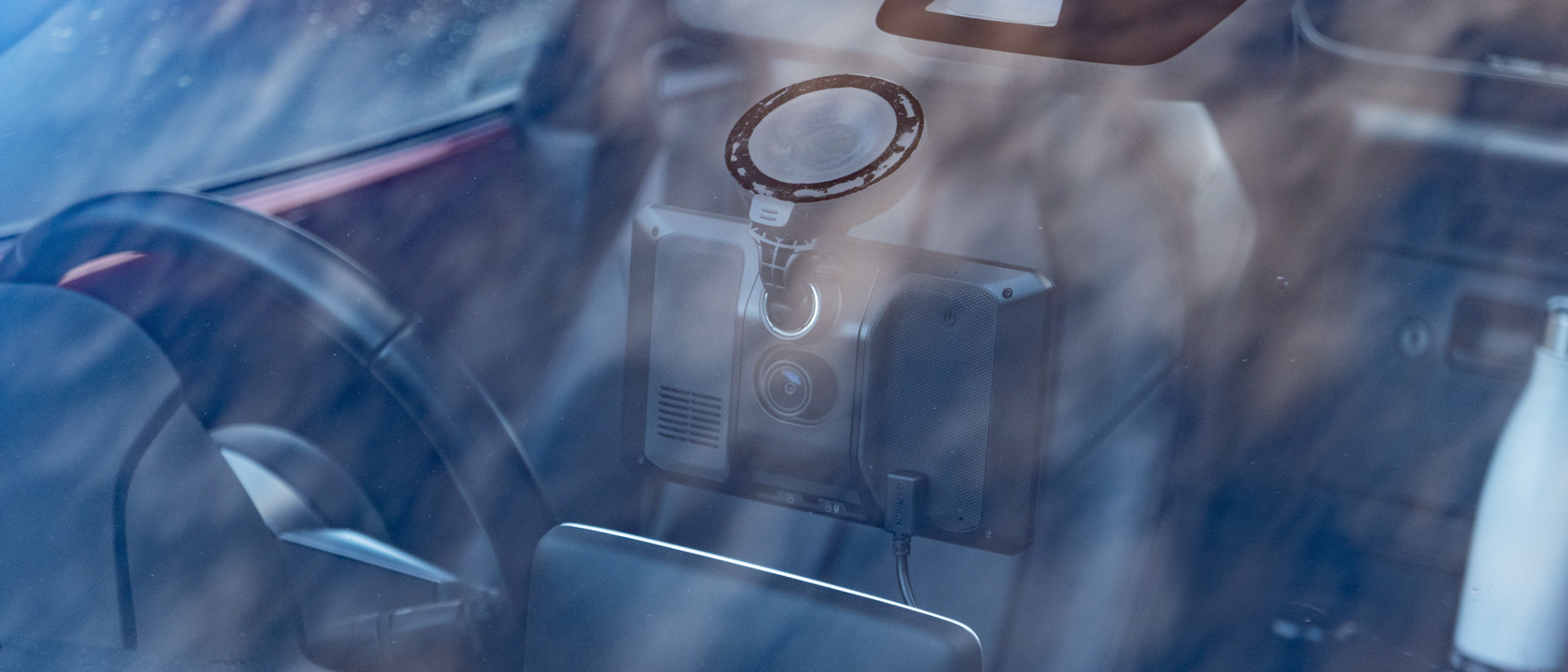TechRadar Verdict
Although expensive, the DriveCam 76 is a fully fledged sat nav that’s easy to set up and use. It looks good, has a huge range of features, and will be welcomed by road-trippers who take their mapping seriously and want an upgrade from a smartphone stuck to the windscreen. The integrated Full HD dash cam works well enough, but we expected more for the price. It’s worth buying only if you intend to make full use of every available feature.
Pros
- +
Great user interface
- +
Better navigation than a smartphone
- +
Lots of useful connected features
Cons
- -
Expensive
- -
Poor dash cam video stability
- -
Notification system feels like overkill
Why you can trust TechRadar
Editor's Note
• Original review date: November 2022
• Launch price: $449.99 / £419.99 / AU$749
• Official price now: $449.99 / £419.99 / AU$749
Update: March 2024. Garmin's DriveCam 76 is a feature-packed sat nav and dash cam combo that records the road in Full HD while giving directions. It's an expensive tool and one that's only worth the cost if you'll use all of its features. Still, thanks to its 7-inch display and rich visuals, you'll find it in our best dash cams guide as our top pick for vehicles without a built-in infotainment system. While its official price hasn't dropped since launch, we have seen significant seasonal discounts on the DriveCam 76, so it's worth watching during during events like Amazon Prime Day.

Two-minute review
You’d be forgiven for thinking that dedicated sat navs were a thing of the past, usurped first by integrated systems from car manufacturers, then by smartphones. This may be true for many drivers, but for those who want a navigation system that promises to outshine both car and phone, a dedicated unit can still be the way to go. Especially if you are a habitual road-tripper keen for international adventure, and would rather keep your smartphone hidden safely away from the windshield.
The Garmin DriveCam 76 fits this bill, but also throws in a dash cam. Like the best dash cams, it quietly records the view ahead on every journey, then securely saves footage if a collision is detected or the manual record icon is tapped.
It’s an extension of Garmin’s DriveSmart family of navigation systems, only with a Full HD dash cam attached to the rear of its 7-inch touchscreen display. This addition bumps the price up from $299.99 / £229.99 for the similarly sized DriveSmart 76, to a considerable $449.99 / £419.99 for the DriveCam 76. Check out the Garmin promo codes that could help your buying decision.
The resolution of the TFT panel is 1024 x 600. While that pixel count doesn’t sound too impressive compared to a modern smartphone or tablet of a similar size, it’s absolutely fine for a sat nav. The interface is bright, clear and intuitive, with large icons that are easy to read and tap while on the move. Brightness isn’t adjusted automatically, which is a shame, but it only takes a couple of taps and a swipe to dim the screen so it doesn’t dazzle in the dark.
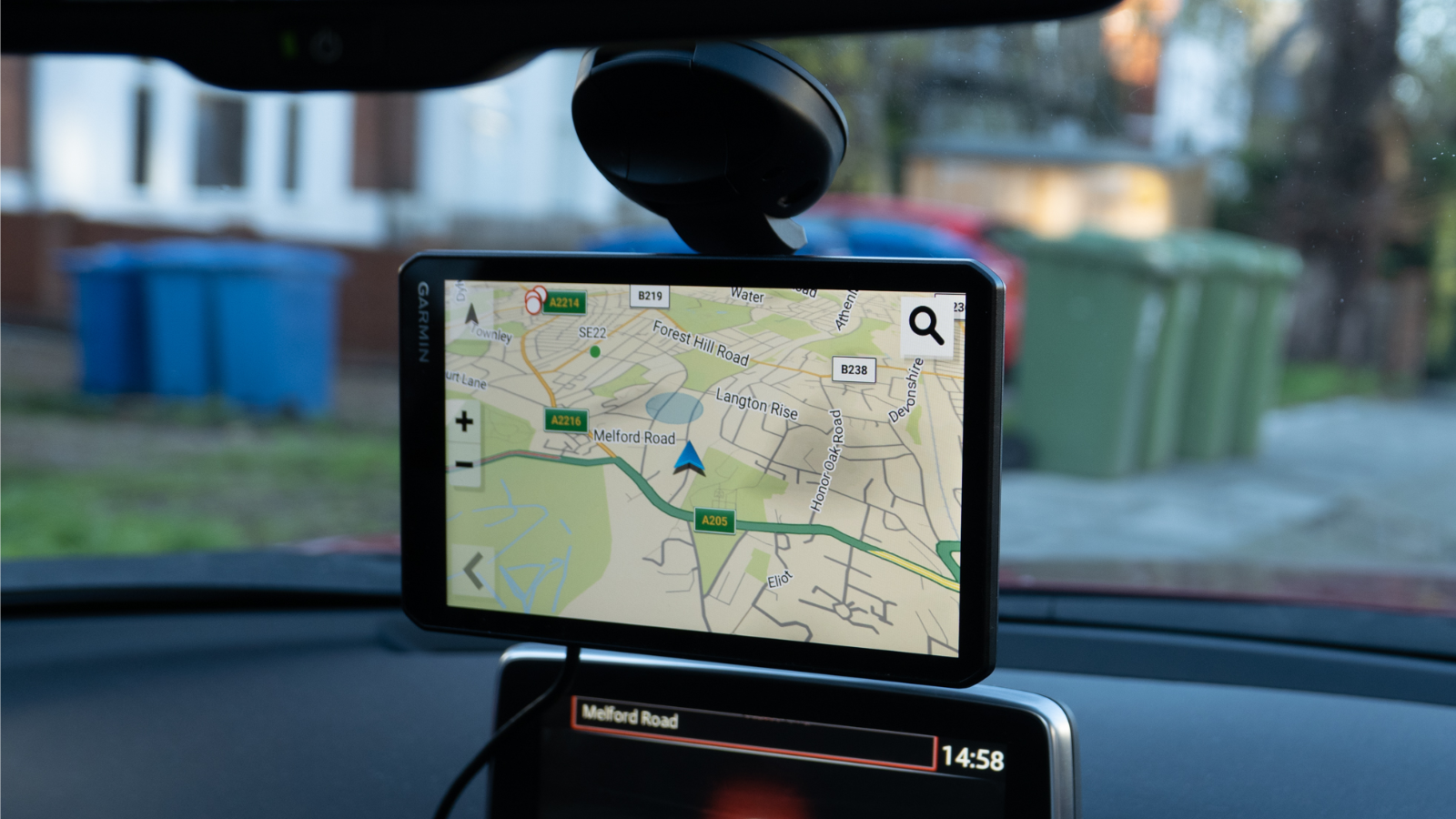


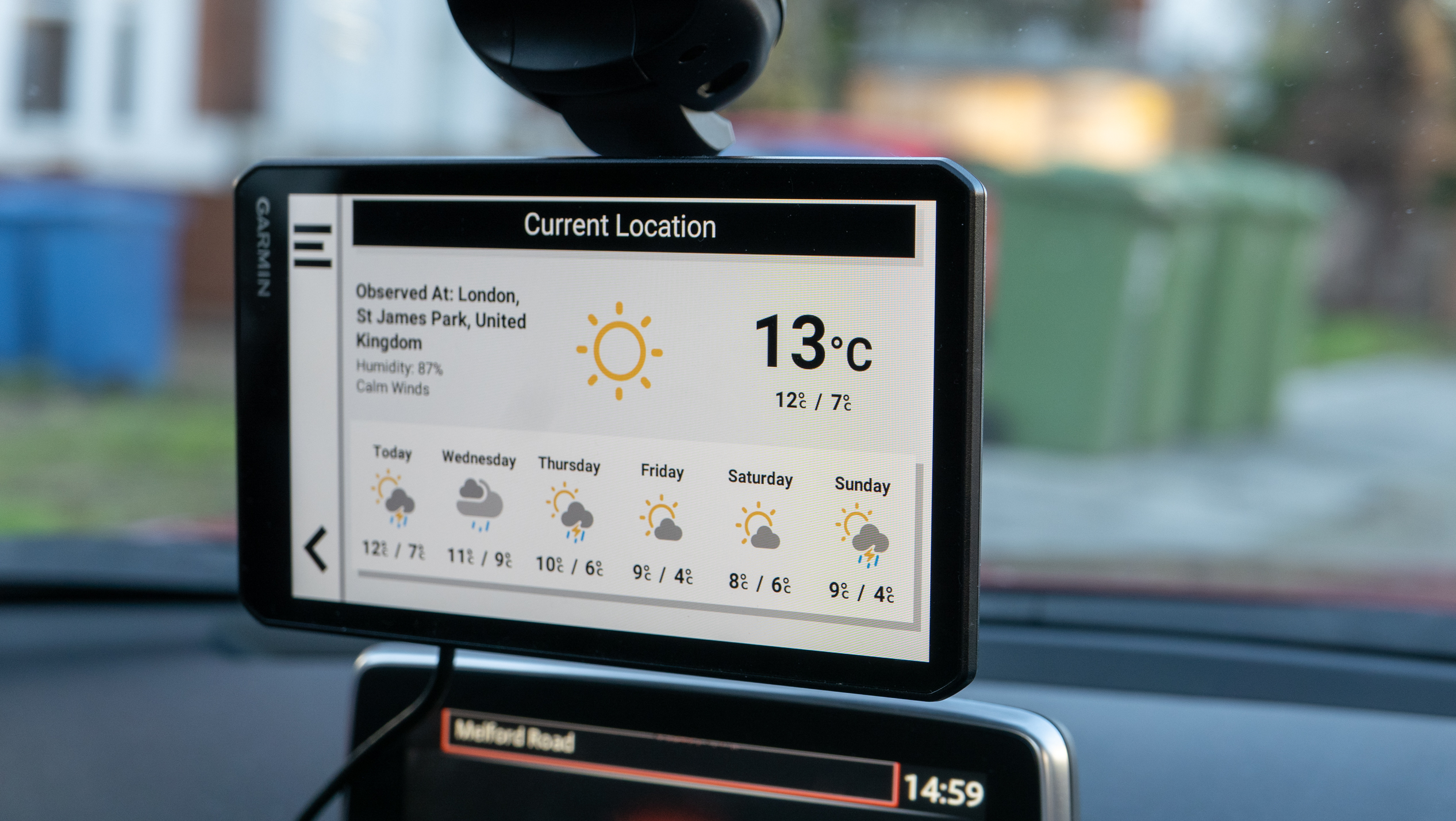
The DriveCam 76 fits to your windscreen with a suction cup. This clips securely into place with a clamp, and fits to the back of the sat-nav with a ball-and-socket joint that allows for adjustment in every direction. The dash cam lens also adjusts horizontally, and between these two movements you’ll find a position that points the display towards the driver and the camera directly at the road ahead.
Sign up for breaking news, reviews, opinion, top tech deals, and more.
Power comes via a USB-C port and an included 12V lighter socket adapter. There’s 32GB of internal storage, plus a microSD card slot for storing up to 256GB of dash cam recordings; a card is not included in the box. Battery life is a claimed 30 minutes, but in reality this is a device you’ll want to always have plugged in, unless you’re on the shortest of journeys.
Given the large size of this product compared to a regular dash cam, you’ll have to think carefully about placement to avoid blocking your view. Cars with shallow windscreens and integrated displays that stick up from dashboard leave very little space for the DriveCam 76. This review was conducted using a Mazda MX-5, and there really wasn’t enough space to fit the Garmin. Sat between the car’s central mirror and its own display, too much of the windshield was blocked for our liking. Naturally, a larger vehicle, or one with a display positioned differently (or without one at all) should be just fine.
That’s really the point here: the DriveCam 76 is a great addition to older vehicles that lack their own infotainment and navigation systems. As well as mapping and dash cam functionality, the Garmin can show a local weather forecast, in addition to incoming notifications from your smartphone – although you’ll want to switch off everything apart from calls and messages in the system to avoid being notified for absolutely everything. There are also speed camera alerts, plus lane drift and forward collision warnings.
Garmin made a name for itself with excellent mapping systems, and this is where the DriveCam 76 shines brightest. Addresses are easy to input and instructions are loud, clear and well-timed. You can also speak locations to the voice recognition system, summoned by saying ‘Hey Garmin’. Being told street names and landmarks with directions really helps when navigating an unfamiliar area, and the interface switches to a split-screen with graphics to help you take the correct lane at roundabouts and junctions.
Moving to Garmin navigation from Google Maps or Apple Maps takes a bit of acclimatisation. Once you’re tuned into how its instructions are delivered – and what its visual prompts look like – you’ll have no issues at all. It’s arguably a better navigation experience than a smartphone, and only takes some getting used to in the same way as switching from one navigation app to another does.
Live traffic data comes from your phone’s data connection. This is set up by downloading Garmin’s smartphone app and connecting to the DriveCam 76 via Bluetooth. This connection is established automatically after the initial setup. The device also has Wi-Fi, which can connect to your home router for downloading software updates and new mapping databases.
Integrated data from FourSquare and TripAdvisor helps you find places by stating their name instead of their address, but we found this didn’t always work perfectly, with the DriveCam occasionally suggesting an incorrect destination. Some buildings are rendered in 3D to further help with navigation and, when connected to your smartphone’s data connection, live fuel prices are shown at stations along your route. Pair with your phone, and you can also make and receive calls, either by tapping the DriveCam or issuing a voice command.
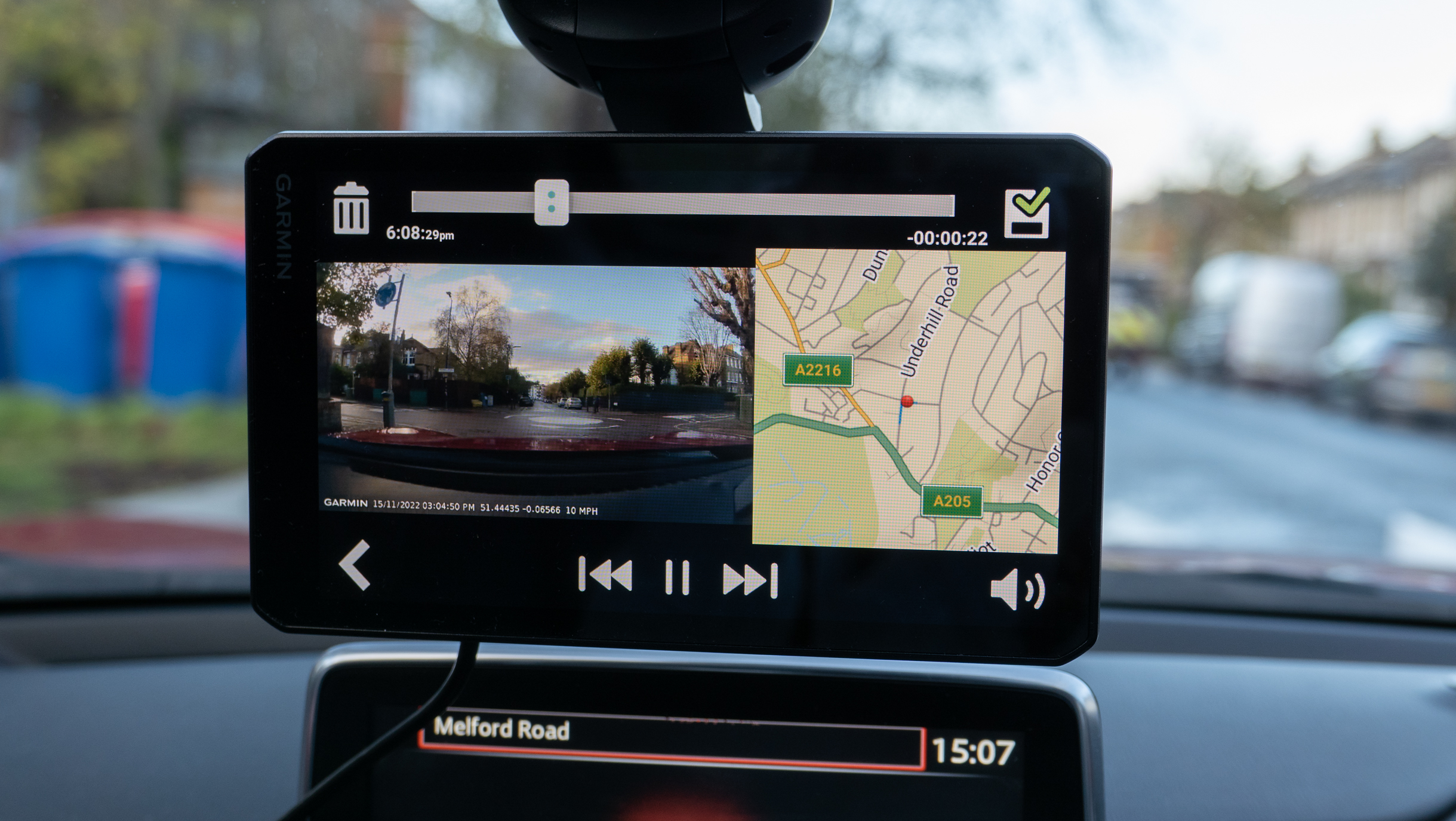
The built-in dash cam captures footage in Full HD at 30 frames per second. By default, the DriveCam 76 overlays the current time, date and vehicle speed. With HDR and a resolution of 1920 x 1080, video quality is fairly good. Details like road signs and number plates are legible, while exposure is balanced.
Given the DriveCam 76 is partly a dash cam with a massive screen, we liked how it is easy to view recordings (along with a map to show where they took place) on the device itself, rather than having to transfer everything to a phone or computer.
The 140-degree lens is wide enough, but falls short of the 180 degrees of the Garmin Dash Cam 67W. Also counting against the DriveCam is how footage wobbles and distorts, likely due to the stabilisation software trying to iron out bumps in the road. This doesn’t take any detail away, but means footage is worse than from some other Garmin dash cams. This made the dash cam feel like an afterthought, rather than a key feature of what is an expensive and otherwise premium-feeling product.
Should I buy the Garmin DriveCam 76?
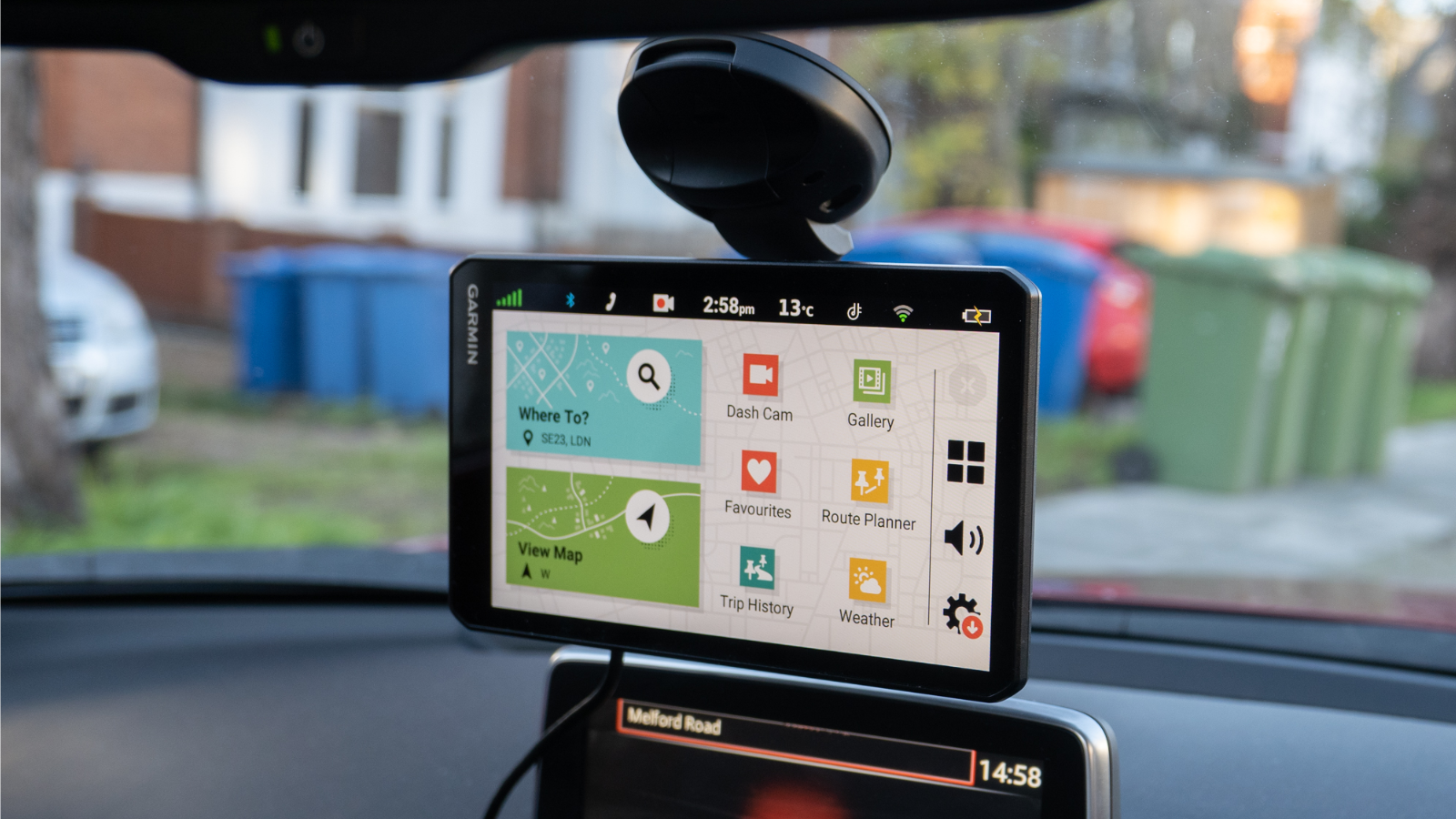
Buy it if...
Your car has no infotainment of its own
Older vehicles without an infotainment system will benefit most from the DriveCam 76. Besides live mapping and a dash cam, it adds speed camera and forward collision warnings. Such vehicles are also likely to have more space for the DriveCam 76, especially if they don’t have a dashboard display.
You want an all-in-one car tech system
By rolling a dash cam and navigation system into one, the DriveCam 76 reduces the number of devices mounted to your windshield, improving visibility. Smartphone connectivity also means you can hide your handset out of sight while still benefitting from its data.
You demand the very best when it comes to navigation
Smartphone mapping apps sometimes have a mind of their own, especially when you cross borders. For adventurous drivers who regularly embark on international drives, the DriveCam’s dedicated sat nav is a reliable option, with useful features such as 3D buildings and TripAdvisor integration. The built-in dash cam is a welcome bonus, albeit a pricey one.
Don't buy it if...
You have a small car or a shallow windshield
The DriveCam 76 is much larger than other dash cams. If it’s competing for space with a car’s forward-facing safety systems, rear-view mirror, and an infotainment display atop the dashboard, your windshield will quickly fill up. In compact vehicles, this can lead to a setup that feels cluttered and obstructive.
You want smartphone-like functionality
This isn’t an alternative to Apple CarPlay or Android Auto. While phone notifications can be set up, there’s no filter by default, so you risk being inundated by email and social alerts. You can limit notifications to calls, texts and other essentials, but these aren’t intelligently interactive in the same way as a proper infotainment system.
You’re on a budget
Even with its multiple talents, the DriveCam 76 is pretty expensive. Unless you really intend to make use of all of its features, we suggest looking at a cheaper dash cam and using your smartphone for navigation duties. Garmin’s imaginatively named Dash Cam range is a good place to start.

Alistair Charlton is based in London and has worked as a freelance technology and automotive journalist for over a decade. A lifelong tech enthusiast, Alistair has written extensively about dash cams and robotic vacuum cleaners for TechRadar, among other products. As well as TechRadar, he also writes for Wired, T3, Forbes, The Independent, Digital Camera World and Grand Designs Magazine, among others.
